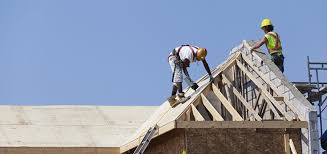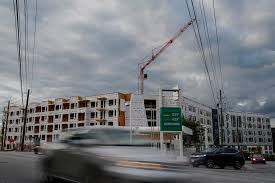
US housing starts rebounded in June, lifted by a surge in multifamily building, but continued weakness in single-family homes signals persistent market headwinds.

New residential construction rose 4.6% to an annualized pace of 1.32 million homes last month, recovering from an almost 10% drop in May, according to the latest government data. That slightly beat economists’ median forecast of 1.30 million, Bloomberg reported.
The rebound was driven by a 30% jump in multifamily starts, while single-family building slowed to an annualized pace of 883,000 units — marking one of the weakest readings since early 2023.
“There’s just not much room for much optimism in the second half of 2025,” said Nationwide Senior Economist Ben Ayers earlier this week. “By 2026, some of the headwinds facing builders will be behind them, possibly including mortgage rates and uncertainty over President Donald Trump’s tariff policies.”
Builders remain cautious as they contend with a bloated new-home inventory — now at its highest in over 17 years — and face mounting competition from a growing supply of existing homes hitting the resale market. Homeowners have increasingly accepted mortgage rates near 7%, opting to list properties that previously stayed off the market.

In response, many builders have turned to price cuts and buyer incentives, further limiting appetite for new single-family projects in the near term. Meanwhile, building permits for single-family homes, which signal future construction activity, fell for the fourth month in a row to the lowest level in more than two years. One-family homes under construction have declined steadily for three years, signaling a longer-term recalibration.
Regionally, single-family starts fell across the board, with the West and South — the country’s two biggest homebuilding markets — seeing the steepest drops. Builders in those regions cite affordability constraints, high land costs, and shifting buyer demand toward smaller or multifamily options.
The Federal Reserve Bank of Atlanta’s GDPNow forecast suggests that residential investment subtracted 0.27 percentage points from second-quarter GDP growth, underlining housing’s current drag on the broader economy.
Industry analysts expect a cautious path forward. Higher borrowing costs, combined with uncertainty around tariffs and election-year policy shifts, will likely keep the single-family segment muted through late 2025. By 2026, however, some of these hurdles — especially mortgage rates — may ease if the Fed pivots to rate cuts and supply chain pressures moderate.
Meanwhile, all eyes will be on the National Association of Realtors’ upcoming existing-home sales report, which is due Wednesday and will offer fresh insight into whether resale supply will continue to put pressure on new construction.
Originally reported by Bloomberg News in Equipment Finance News.